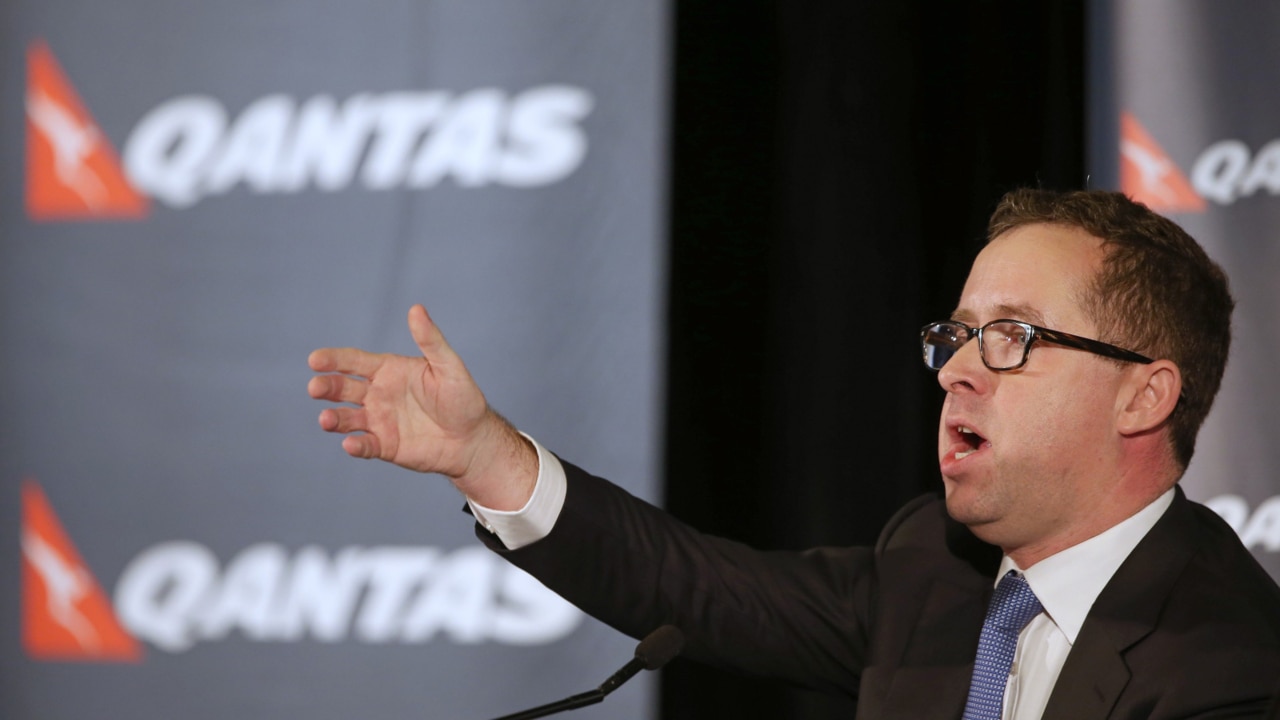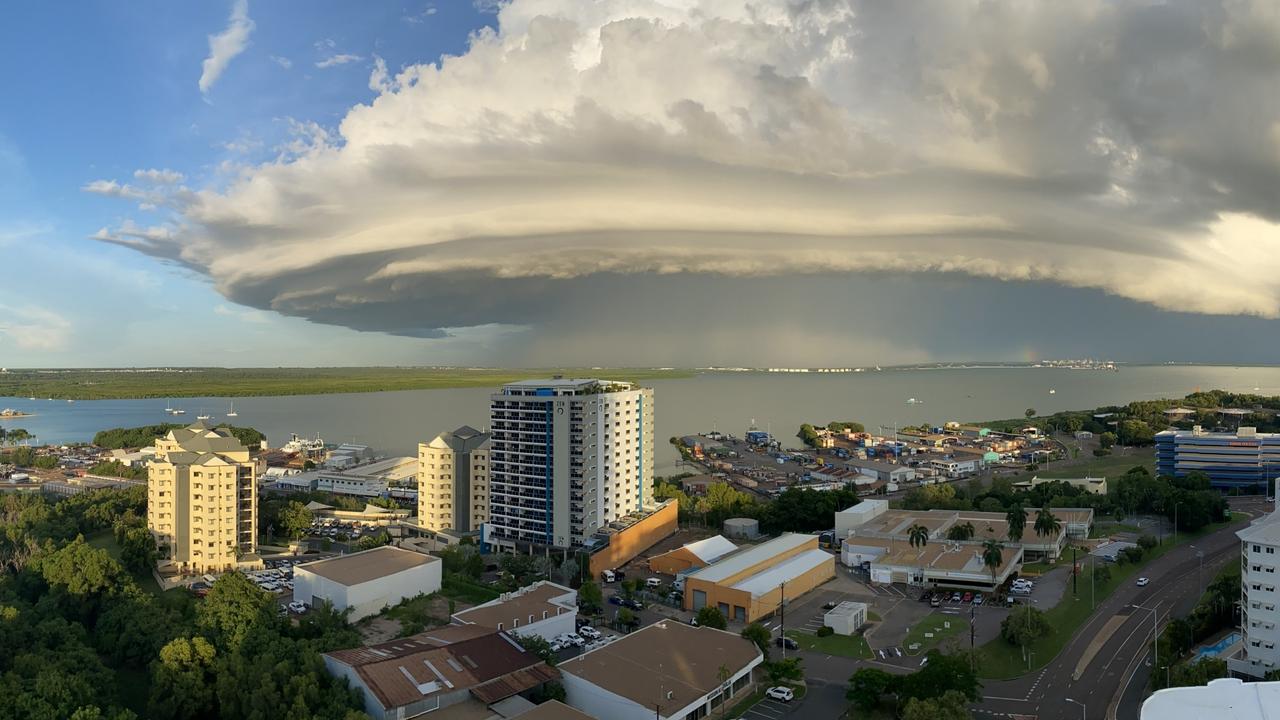Qantas posts record half year profit in a $2.7bn turnaround
Qantas chief executive Alan Joyce has assured customers they will reap the benefits of the airline’s resounding return to profitability after three years of losses.

Qantas chief executive Alan Joyce has assured customers they will reap the benefits of the airline’s resounding return to profitability after three years of losses.
The $1.43bn half year profit was a record for the 101-year-old carrier and sets up Qantas for a powerhouse full year result, expected to be the last delivered by Mr Joyce as he prepares to bow out on a high.
Strong travel demand, capacity constraint and particularly high airfares helped rebuild the balance sheet in a “huge” $2.7bn turnaround on the same period the previous year.
Revenue climbed to almost $10bn, well above pre-Covid levels of $9.2bn, and all four operating segments turned a profit, with Qantas Domestic, International and Loyalty achieving record results.
Jetstar recorded a more modest gain of $177m, despite a 39 per cent increase in ancillary revenue collected from passengers for things like baggage allowance, and food and beverage.
Although airfares were likely to moderate as more capacity returned to the market by mid-year, Qantas noted prices would remain “significantly above 2019 levels”.

Mr Joyce denied he was over-inflating fares to help boost the bottom line, insisting market forces dictated prices, not the airline.
“There’s plenty of competition, more than most other industries and Qantas cannot dictate the airfares in the market,” he said.
“Nobody was saying that before Covid and nobody should be saying that now because we don’t.”
He said regular sales, 10 million fares under $100 with Jetstar and increasing capacity would all provide opportunities for more affordable air travel in the months ahead. Customers could also look forward to new aircraft as the domestic fleet renewal began later this year and extensive lounge improvements.
The investments also stretched to prototype business and first class suites Qantas planned to install on A350-1000s, for ultra-long-range flights between Sydney and London starting in late 2025.
Described by Mr Joyce as the “best in the world”, the first class suite included a stand-alone bed, chair and dining table while business class added a privacy door and feature lighting.
“We’re bringing everything we’ve learned, both technically and in terms of passenger comfort, to Project Sunrise flying,” Mr Joyce said.
He also tackled the thorny question of whether Qantas should repay some or all of the JobKeeper and other financial assistance provided by government during the pandemic, totalling over $2bn.
Mr Joyce said at least half of the funding was in return for services Qantas provided on behalf of the government.
“It was over 30,000 flights that we operated to keep Australians linked to the world, and keep freight moving,” he said.
“For that we burned over $300m in fuel, we spent $200m on salaries, we spent hundreds of millions on airport costs to transport those goods. Should we refund that? No, we provided a service.”

He said now Qantas was making a profit it was paying a considerable amount of tax.
“This year alone in ticket taxes and payroll taxes and fringe benefit taxes, we’re going to be giving the government $1.2bn, and in addition to that we’re recruiting thousands of people who are going to be paying PAYG to the government,” Mr Joyce said.
Employees would continue to be offered 3 per cent annual pay rises but could also expect around $11,500 in previously announced bonuses and shares this year as a “thank you” for their role in the recovery.
An additional $500 in staff travel credit was also being made available, Mr Joyce added.
The sweeteners were dismissed by the Transport Workers Union, which said the profit dwarfed the $100m in savings Qantas made by outsourcing the jobs of more than 1600 below the wing workers.
“That fraction of a cost saving in comparison to ballooning profits and exorbitant bonus schemes was only possible by paying people less to do the same work, causing tremendous pain to hundreds of Qantas families, to the business, and to good, secure jobs across the aviation industry,” TWU national secretary Michael Kaine said.
Despite the emphatic return to profit, Qantas shares dived 6.8 per cent on Thursday to $6.03, their lowest level this year.
The stockmarket reaction was at odds with analysts who viewed the half year results as overwhelmingly positive.
“There’s no evidence of demand destruction caused by cost-of-living pressures with the company suggesting that intention to travel is still quite strong,” Barrenjoey head of transport and gaming Matt Ryan said.
“Despite some businesses suggesting a consumer slow down, Qantas believes it is seeing a reallocation of spend towards travel.”
Citi Research vice president Samuel Seow was more sceptical about demand pointing out passenger load factors across Qantas and Jetstar were less than 1 per cent above pre-Covid figures at 85.4 per cent.
He said that would imply ticket price increases of around 45 per cent did “most of the heavy lifting and not loads”.
Moody’s Investors Service vice president Ian Chitterer suggested Qantas was well positioned even in the event that the current strong travel demand deteriorated.
“Strong cash flow has enabled Qantas to reduce net debt to $2.4bn from the peak pandemic level of over $6.4bn. This leaves Qantas’ net debt well below its target range of $3.9bn to $4.8bn,” Mr Chitterer said.
“And despite the announced $500m share buyback, discretionary non-executive staff rewards, and capital spending that is weighted to the second half, management has guided that net debt will remain below the target level for fiscal 2023.”








To join the conversation, please log in. Don't have an account? Register
Join the conversation, you are commenting as Logout